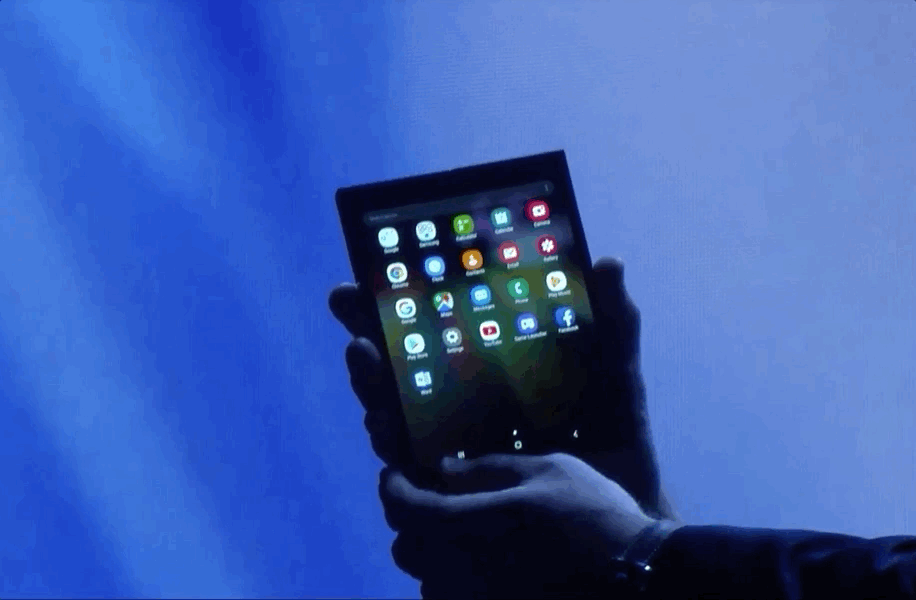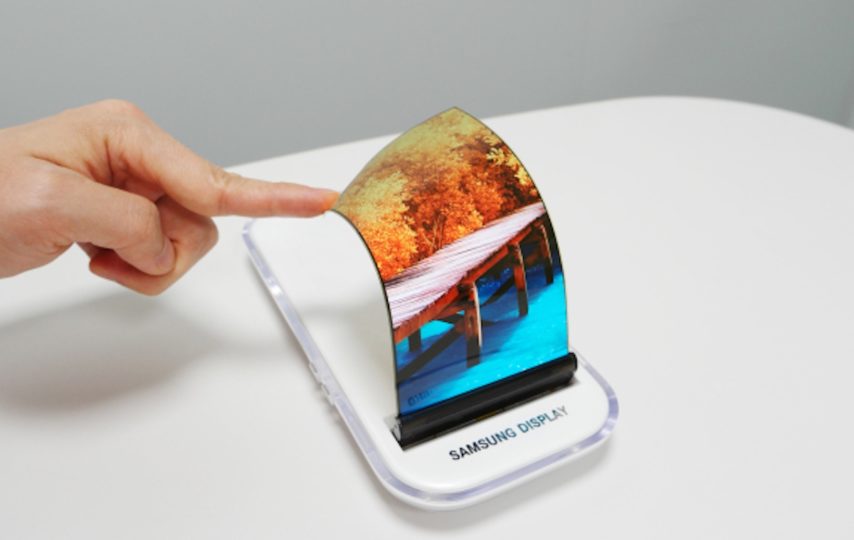Futuristic-looking bendable smartphones and tablets also have caught our imagination for many years. Samsung is currently hoping to create such crazy theories a reality.
The Galaxy manufacturer showed off its new Infinity Flex Screen, a display technology that will permit a tablet-sized display to fold into a system which approximates the size and shape of a smartphone. While we have seen flexible and bendable wearable apparatus, this is only one of those first times we have seen this kind of screen at a telephone that is rumoured to send in 2019. Samsung’s apparatus was”disguised” by what is apparently a rustic circumstance, and exhibited only under dim lighting, but it is a lot more than just concept art.

Samsung is really using two distinct screens to make its foldable cellphone — only on the interior, and a more compact screen on the exterior — including Royale’s FlexPai, that employs a single fold screen on the exterior of this gadget. This instant” cover screen,” since Samsung calls it, acts as a 4.58-inch mobile interface using a resolution of 840 x 1960 (21:9). Additionally, it is flanked by far bigger bezels at the very top and bottom when compared with the inner screen. Even though it appears very stocky, Samsung claims that the device hiding within the disguise is really”stunning.”
This blend of screens has provided us an early glimpse at what to expect from foldable telephones in 2019 and outside. As glass isn’t pliable, Samsung has needed to create new substances to guard its new screen. The Infinity Flex Screen utilizes a polymer which Samsung says is equally”flexible and demanding,” meaning it could continue to keep its power when folded and unfolded” hundreds of thousands of occasions.” None of that is glass, however, so it might feel somewhat different than what we are utilized to with contemporary phones, tablet computers, and touchpads.
As smartphones started off using plastic resistive screens and stylus input, until the iPhone revealed that capacitive signature on glass has been the long run, this cushioned era will comprise compromises prior to the tech improvements. Samsung’s apparatus, although pocketable, did not look especially thin in contrast to contemporary smartphones. The bezels when folded for use for a phone are giant in contrast to contemporary edge-to-edge flagships, and the folding screen Samsung has selected makes the device quite tall when closed.

“Folding telephones would be the 3D TV of all the cell world,” proclaimed Wall Street Journal technology columnist Christopher Mims on Twitter. They have been viewed as a means to sell more 1080p TVs with no superior viewing experience. Not everybody agrees that foldable telephones will flop, however.
“Few are saying’if’ foldable or rollable mobile screens are the future of smartphones, the sole question is when and from whom,” explains Patrick Moorhead, a business analyst in Moor Insights and former AMD executive. “The core advantage of a foldable smartphone is the consumer can receive the advantage of a bigger screen but can fit it in their pocket cost, or handbag.” Now we simply call phablets, telephones. Likewise the curved screen on the oft-ridiculed Galaxy Notice Edge and Galaxy Round eventually morphed to the Infinity Displays located on Samsung’s contemporary S-series of flagships. If foldable telephones follow an identical travel, then Samsung’s first apparatus will not fully capture the layout possible — rather, it is going to mark the start of an emerging conflict over this fascinating screen technologies. “The discoveries we have produced in screen materials are matched by discoveries in manufacturing. Because of this, we are going to be prepared to begin mass production in the forthcoming months.”
The development of mass production means apparatus makers will have the ability to decide on this screen just like they do with Samsung’s OLED panels. Huawei is allegedly planning to launch a foldable handset following year. Lenovo and Xiaomi also have resisted their very own prototypes, and LG is working on its flexible OLED screens and TVs that roll up into a box. The 2019 Consumer Electronics Show in January may be a first battleground for foldable apparatus, fueled by Android’s official support for foldable screens. Samsung is producing its Multi Active Window program which will enable its foldable mobile to show three programs at precisely the exact same moment. Multitasking is just 1 facet of applications, and Samsung along with Google will have to maximize the whole Android UI and expertise for these sorts of devices. Apple has escalated in hardware and software integration.
Foldable telephones would be the clear initial market with this display technologies, but producers will become a lot more ambitious since the screen technology evolves. Samsung is also assuring rollable and stretchable OLED screens from the future. Imagine rolling or folding out a 55-inch TV into something which will fit into a bag, or replacing paper and pencil using a foldable tablet computer. It seems incredible at this time, but we are just at the very start of our future.







